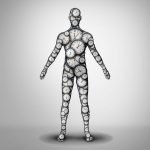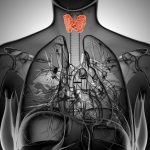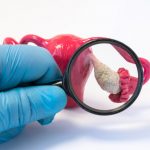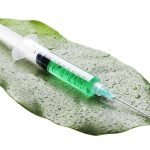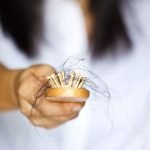Female Infertility: Case Studies Using Naturopathic Interventions
Vis Medicatrix Naturae
Kate Naumes, ND
Carina Parikh, MSN, MSiMR
David Daniels
Infertility affects as many as 12.3% of women ages 15-44 (or 7.5 million women) in the United States.1 Consequently, it is imperative to find methods to help women overcome infertility so that they may conceive a healthy child.
Many of the current treatments for infertility are costly, have low success rates, and have the potential to negatively affect long-term health.2,3 The common medical interventions used for infertility include fertility medications, in-vitro fertilization (IVF), and intrauterine insemination (IUI). Fertility medications, such as clomiphene and gonadotropins, stimulate growth of the ovarian follicle, followed by follicular rupture induced by a human chorionic gonadotropin (hCG) trigger shot. These medications are often used in conjunction with IVF and IUI. IVF is an assisted reproductive technology that includes combining an egg and a sperm in a laboratory and then transferring the fertilized embryo into the uterus. IUI involves placing the sperm inside of the uterus to help with fertilization. Although less invasive and expensive than IVF, in IUI the sperm has to fertilize the egg on its own within the woman’s reproductive tract.
Research suggests a link between a variety of health conditions and subsequent infertility, including polycystic ovarian syndrome (PCOS), endometriosis, advanced maternal age (AMA), high body mass index (BMI), the MTHFR genetic mutation, hypothyroidism (both clinical and subclinical), and poor ovarian reserve.4-14 In this article, we provide case evidence for alternative methods for managing infertility that are effective at improving the underlying condition leading to infertility – methods that are less expensive than medical intervention and are supportive of long-term health.
Case Study 1
Initial Presentation
The first client presented at the office in April of 2012. At age 31 years old, she was 5’1” tall, weighed 172 lb, and had a BMI of 32.5. She presented with acne, difficulty losing weight, painful menses, mood swings, short menstrual cycles, and a history of ovarian cysts and human papilloma virus (HPV). At the time of presentation, she was sleeping 6-7 hours per night, though she reported that she was not sleeping well. She exercised between 3 and 5 days per week, which consisted of walking, yoga, or running. Previous labs showed a low progesterone level and an anti-müllerian hormone (AMH) of 0.6 ng/mL. Her obesity, ovulatory dysfunction, low progesterone, and low AMH, were all likely contributing to the infertility that was revealed along the way. She had a family history of cancer and mental illness.
Recommendations
Dr Naumes created an individualized plan for the client to make lifestyle changes to improve her fertility. In early 2013, the client began charting her menstrual cycles, using her basal body temperature to track ovulation and cycle length. Charting showed anovulation in 2 out of 3 charted cycles, and 21-22-day cycles. Around June 2013, with Dr Naumes’ guidance, the client was diagnosed with PCOS by her OB/GYN. She was also found to be homozygous for the C677T MTHFR mutation, and to have an elevated HbA1C, elevated total testosterone, and elevated triglycerides. This information helped motivate the client to implement targeted lifestyle changes to ameliorate the symptoms associated with these conditions.
- Diet: Dietary changes were strongly encouraged, and included eating fewer processed carbohydrates, increasing protein and fiber intake, and avoiding low-fat dairy and soy. By adding more protein and fiber, she was able to maintain a more stable blood glucose level and increase her sense of satiety, such that cravings for sweets and refined carbohydrates were reduced. Dr Naumes also recommended that the client eat small meals every few hours to balance blood sugar. Glucose intolerance and hyperinsulinemia can inhibit ovulation,15 and due to the PCOS the client struggled to keep her blood sugar stable.
- Detox: She completed three 4-week detoxification protocols that focused on diet, stress management, sleep, as well as other methods to aid in detoxification (eg, colonics, dry skin-brushing, saunas, and supplementation). The detoxification also included a full elimination diet. After the elimination diet, she avoided gluten and dairy entirely once she determined that she was sensitive to both.
- Sleep: Dr Naumes recommended that the client purchase blackout curtains to reduce exposure to light, and to go to bed earlier in order to get consistent quality-sleep each night
- Stress/Relationships: Dr Naumes encouraged the client to get regular acupuncture, and referred her to RESOLVE, an infertility support group for women
- Exercise: It was suggested that the client begin incorporating brisk daily walking into her routine so that she was getting regular movement daily to help decrease her BMI and regulate blood glucose
- Supplementation: A supplement protocol was introduced, which included adaptogenic herbs, a prenatal vitamin suitable for women with the MTHFR mutation, vitamin B-complex, evening primrose oil, omega-3 fatty acids, garlic, a high-quality probiotic, magnesium, N-acetylcysteine, chromium, and vitamin D
Follow-up
The client took 2 years to improve her overall health before trying to conceive. Underlying biochemical and hormonal imbalances associated with PCOS, obesity, MTHFR genotype, and hypothyroidism were corrected through her lifestyle changes. Her menstrual cycles became regular, with less pain and clotting than before. She lost weight and her body composition improved. She also reduced her consumption of processed carbs, began eating protein with every meal, and did not eat foods to which she was intolerant. Her sleep improved in quality and consistency, and she began getting more sleep each night.
The client conceived without medical intervention in October 2014, 5 months after actively trying to conceive. She continued care with Dr Naumes throughout the pregnancy, and maintained her pregnancy without complications, delivering a full-term healthy baby despite increased risk factors associated with PCOS, obesity, MTHFR, low AMH, and low post-ovulatory progesterone.
Case Study 2
Initial Presentation
This 31-year-old client presented to the office in March of 2014 with infertility. She had a height of 5’6” and a weight of 131 lb, putting her at a healthy BMI of 21.1. She presented with a diagnosis of infertility, PCOS, irregular menstrual cycles that were anovulatory (based on laboratory work and menstrual charting using basal body temperature), ovarian cysts, fatigue and depression (from previous clomiphene use), and breast pain. She slept an average of 8 hours per night, was gluten- and dairy-free, and had a family history of cancer and diabetes. She and her husband had been trying to conceive for 8 years. She had a history of a single miscarriage.
Recommendations
The client was referred out to adjust thyroid medications, specifically to include T3 and T4. After a few months of following the protocol suggested by Dr Naumes, the thyroid dosage was lowered due to her body responding favorably to her lifestyle changes. Dr Naumes recommended that the client begin charting menstrual cycles using basal body temperatures to track ovulation and cycle length.
- Diet: Dr Naumes suggested that the client increase her water intake, begin regular colonics to improve digestion and eliminate toxins, and complete an elimination diet. She emphasized a lower-starch, vegetable-rich organic diet, including lentils, sheep and goat dairy, and minimal gluten-free grains. Based on her elimination diet, she thereafter avoided brown rice, potatoes, corn, and paprika.
- Exercise: The client was encouraged to begin walking and exercising daily
- Sleep: Dr Naumes encouraged the client to continue prioritizing sleep, with a goal of 8 hours per night
- Relationships: The client’s husband attended all visits and provided support throughout the process
- Supplementation: The client’s supplement routine included omega-3 fatty acids, a probiotic, magnesium, D-chiro-inositol, vitamin D, a biphasic herbal tincture, N-acetylcysteine, and chromium. She also took a supplement that included detoxification nutrients to promote the metabolism of environmental toxins by the liver.
Follow-up
The client conceived in January 2015, 10 months after the initial visit, without medical intervention. Diet, exercise, sleep, relationships, stress management, and supplementation helped to ameliorate the symptoms associated with her PCOS, anovulatory and irregular menstrual cycles, fatigue and depression, and ovarian function. Dr Naumes helped the client improve her menstrual cycles, and she was able to have 5 consecutive ovulatory cycles before conceiving. Her breast pain disappeared and her post-clomiphene symptoms dissipated. She continued care with Dr Naumes throughout the pregnancy.
During the pregnancy, the client was diagnosed with gestational diabetes after performing a glucose tolerance test. She was given chromium and was told to make some additional dietary changes, including increasing healthy fats from nuts, avocado, and coconut, as well as lowering her starch intake and eliminating fruit. After these alterations, her glucose levels normalized, her OB/GYN indicated that she no longer had gestational diabetes, and she gave birth to a full-term, healthy baby girl.
Case Study 3
Initial Presentation
This 37-year-old woman presented to the office in June 2013 with infertility. At 5’3” and 179 lb, she had an initial BMI of 31.7. She slept around 8 hours per night and exercised 2-3 times per week for 30 minutes, which included walking and yoga. She had a history of chronic pain medication usage, and a family medical history that included cancer, diabetes, heart disease, hypertension, kidney disease, arthritis, glaucoma, stroke, anemia, mental illness, and asthma. At the time of presentation, the client had stage IV endometriosis, loss of libido, chronic fatigue, irregular and painful periods, ovarian cysts, and breast pain. Labs indicated she was heterozygous for the A1298C MTHFR mutation, had a low AMH (0.3 ng/mL), and a low vitamin D level (21.2 ng/mL).
Recommendations
In addition to the suggestions listed below, Dr Naumes had the client start charting her cycles to keep track of cycle length and ovulation based on basal body temperature.
- Diet: Dr Naumes recommended that the client make significant dietary changes, which included introducing a daily breakfast, reducing coffee to 8 oz per day, purchasing organic food, and eating a vegetable-heavy diet with protein at each meal. The client was also encouraged to eat a lighter dinner and to focus on balancing blood sugar by eating smaller meals every few hours. The diet increased her satiety, including reduced cravings for sugar and refined carbohydrates. The vegetable-heavy diet was encouraged to increase overall fiber intake and promote the removal of excess estrogen from the body.
- Exercise: The client was encouraged to begin walking daily for exercise, in addition to her yoga routine
- Sleep: Dr Naumes emphasized that sleep was important for fertility, thus getting adequate regular sleep should continue to be a priority
- Stress: Breathing exercises were introduced and practiced regularly to help calm the client during times of stress
- Supplementation: Supplements were introduced, including a probiotic, a vitamin B-complex, omega-3 fatty acids, vitamin D, methylated B vitamins (including methylfolate) to support MTHFR, calcium and magnesium citrate, and DHEA
Follow-up
After making the recommended lifestyle changes, the client experienced weight loss, improved sleep, and increased libido. Her vitamin D level increased to 52.8 ng/mL. Through changes to diet, stress management, exercise, and supplementation, the client was able to conceive despite presenting with endometriosis, obesity, irregular menstrual cycles, MTHFR mutation, and low AMH.
The client conceived in March 2014, 9 months after the initial appointment, and without medical intervention. She gave birth to a healthy, full-term baby boy.
Conclusion
The results from these case studies suggest that naturopathic interventions could provide a successful, less expensive, and safer method of reversing infertility than medical intervention alone. The cases highlighted in this paper describe women who, by conventional medical standards, had a very low statistical likelihood of conceiving, but who were nonetheless able to conceive, maintain a full-term pregnancy, and give birth to healthy babies. This is important for women who struggle with infertility but cannot afford conventional fertility treatments, or do not want to risk the side effects, or need support to improve their chances of fertility and fecundity. By focusing on methods that work with the body to optimize health, women are able to take a much more active role in their own health; this is not only empowering, but possibly more effective as well. In addition, this approach has lasting positive repercussions for the long-term health of both mother and baby. Future research should compare naturopathic modalities to conventional treatments in an experimental study.
References:
- Centers for Disease Control and Prevention. Infertility. Last updated July 15, 2016. CDC Web site. http://www.cdc.gov/nchs/fastats/infertility.htm. Accessed April 27, 2016.
- Kamphuis EI, Bhattacharya S, van der Veen F, et al. Are we overusing IVF? BMJ. 2014;348:g252.
- Lu YH, Wang N, Jin F. Long-term follow-up of children conceived through assisted reproductive technology. J Zhejiang Univ Sci B. 2013;14(5):359-371.
- National Institutes of Health. Evidence-based Methodology Workshop on Polycystic Ovary Syndrome. December 3-5, 2012. Available at: https://prevention.nih.gov/docs/programs/pcos/FinalReport.pdf. Accessed April 27, 2016.
- Corbould A. Effects of androgens on insulin action in women: is androgen excess a component of female metabolic syndrome? Diabetes Metab Res Rev. 2008;24(7):520-532.
- Practice Committee of the American Society for Reproductive Medicine. Endometriosis and infertility. Fertil Steril. 2004;81(5):1441-1446.
- Missmer SA, Hankinson SE, Spiegelman D, et al. Incidence of laparoscopically confirmed endometriosis by demographic, anthropometric, and lifestyle factors. Am J Epidemiol. 2004;160(8):784-796.
- Faddy MJ, Gosden RG, Gougeon A, et al. Accelerated disappearance of ovarian follicles in mid-life: implications for forecasting menopause. Hum Reprod. 1992;7(10):1342.
- Reproductive Endocrinology and Infertility Committee, Family Physicians Advisory Committee, Maternal-Fetal Medicine Committee, et al. Advanced reproductive age and fertility. J Obstet Gynaecol Can. 2011;33(11):1165-1175.
- American Society for Reproductive Medicine. Weight and Fertility Fact Sheet. Revised 2015. ASRM Web site. http://www.asrm.org/factsheet_weight_and_fertility/. Accessed April 27, 2016.
- Ray JG, Laskin CA. Folic acid and homocysteine metabolic defects and the risk of placental abruption, pre-eclampsia, and spontaneous pregnancy loss: a systematic review. Placenta. 1999;20(7):519-529.
- Coulam CB, Jeyendran RS. Thrombophilic gene polymorphisms are risk factors for unexplained infertility. Fertil Steril. 2009;91(4 Suppl):1516-1517.
- Surks MI, Ortiz E, Daniels GH, et al. Subclinical thyroid disease: scientific review and guidelines for diagnosis and management. 2004;291(2):228-238.
- Jamil Z, Fatima SS, Ahmed K, et al. Anti-Mullerian Hormone: Above and Beyond Conventional Ovarian Reserve Markers. Dis Markers. 2016;2016:5246217.
- Nestler JE. Obesity, insulin, sex steroids and ovulation. Int J Obes Relat Metab Disord. 2000;24 Suppl 2:S71-S73.
 Kate Naumes, ND, holds a Doctorate in Naturopathy and a Certificate in Midwifery from Bastyr University; she also holds a BA in Biochemistry from Mt Holyoke. Since 2011, she and David Daniels have run a Dallas-area naturopathic women’s health practice, where Carina Parikh, MSN, MSiMR, had been employed as a holistic nutritionist. Dr Naumes is a member of the American Association of Naturopathic Physicians and the Texas Association of Naturopathic Doctors. Website: www.naumesnd.com
Kate Naumes, ND, holds a Doctorate in Naturopathy and a Certificate in Midwifery from Bastyr University; she also holds a BA in Biochemistry from Mt Holyoke. Since 2011, she and David Daniels have run a Dallas-area naturopathic women’s health practice, where Carina Parikh, MSN, MSiMR, had been employed as a holistic nutritionist. Dr Naumes is a member of the American Association of Naturopathic Physicians and the Texas Association of Naturopathic Doctors. Website: www.naumesnd.com




